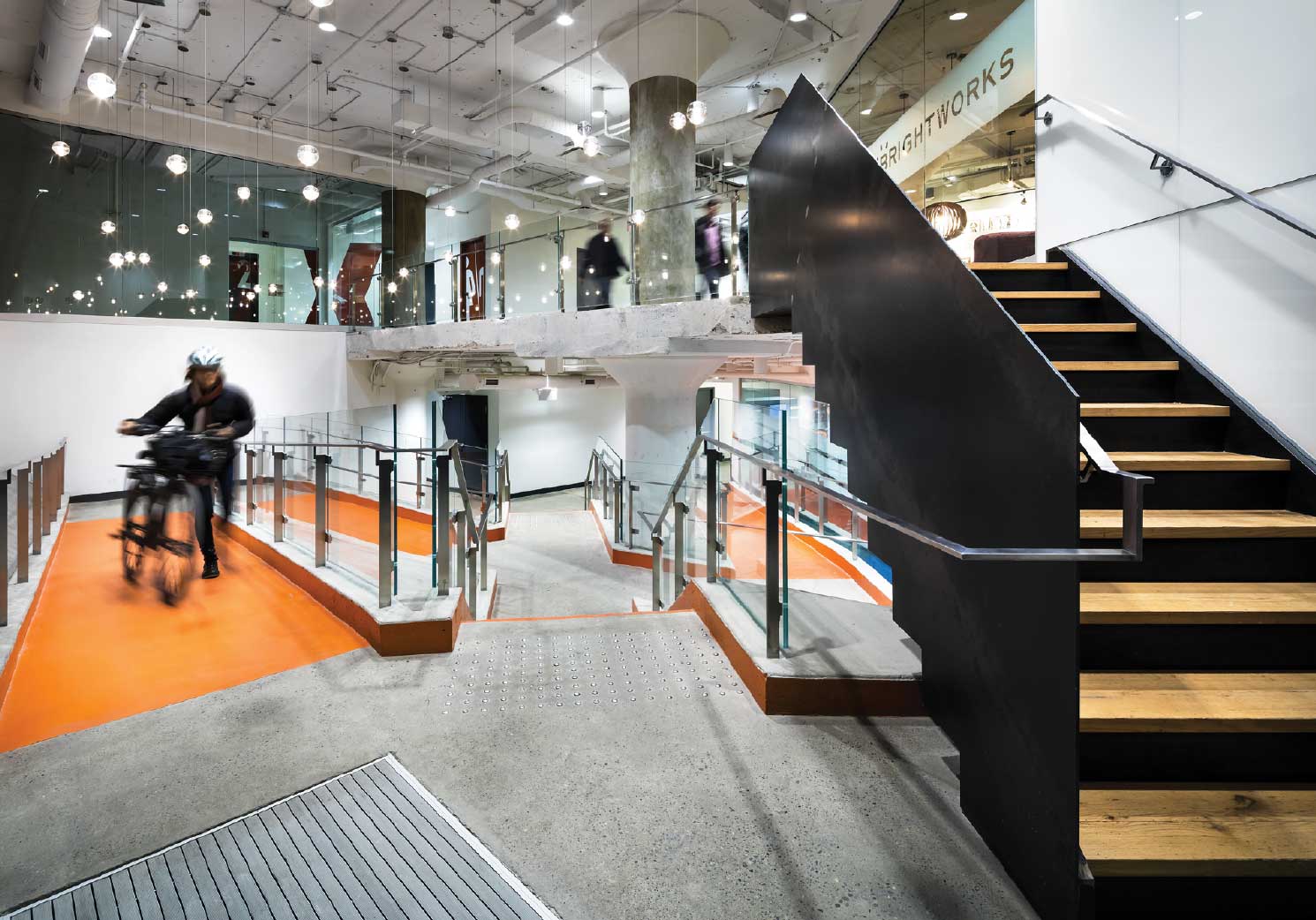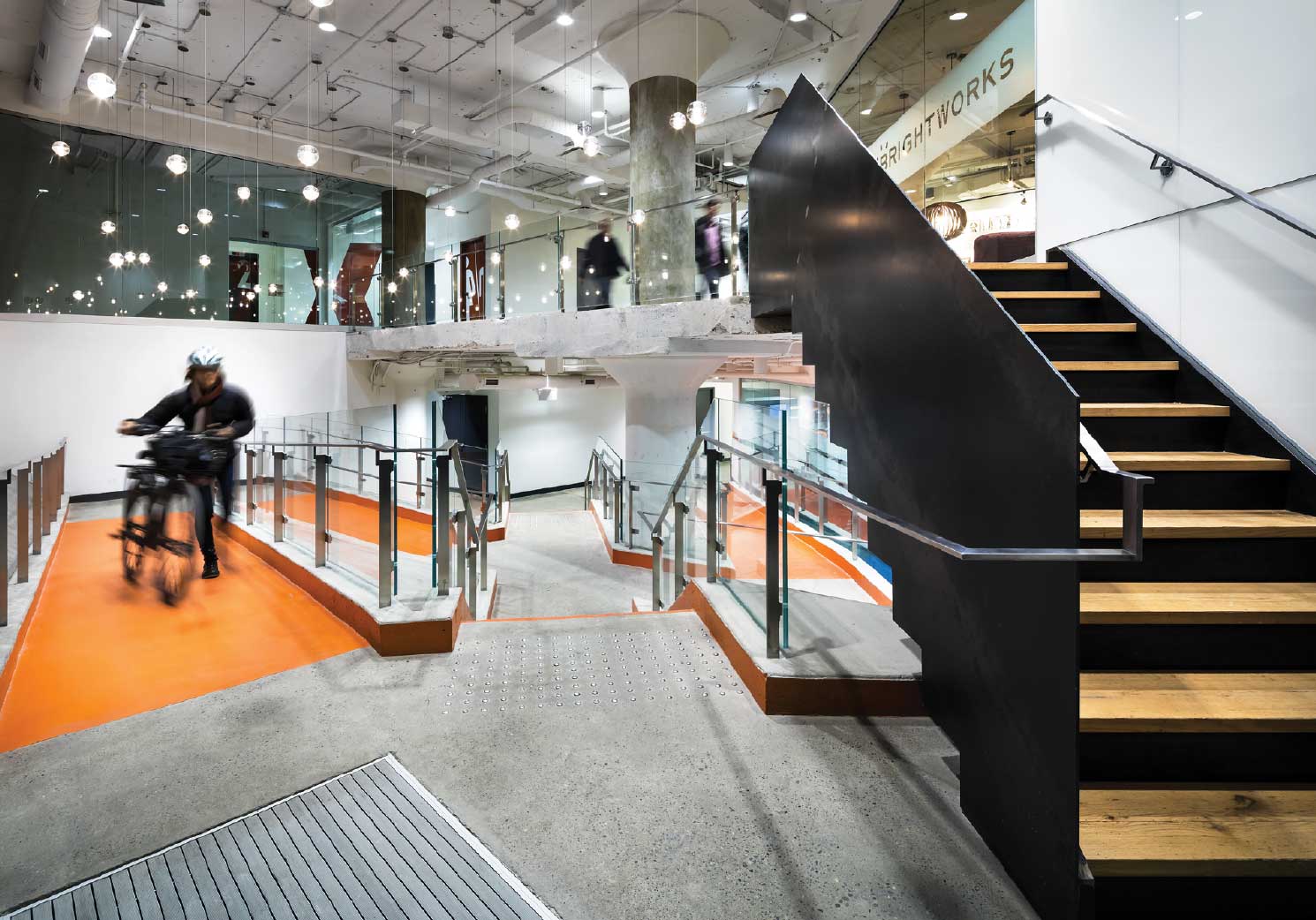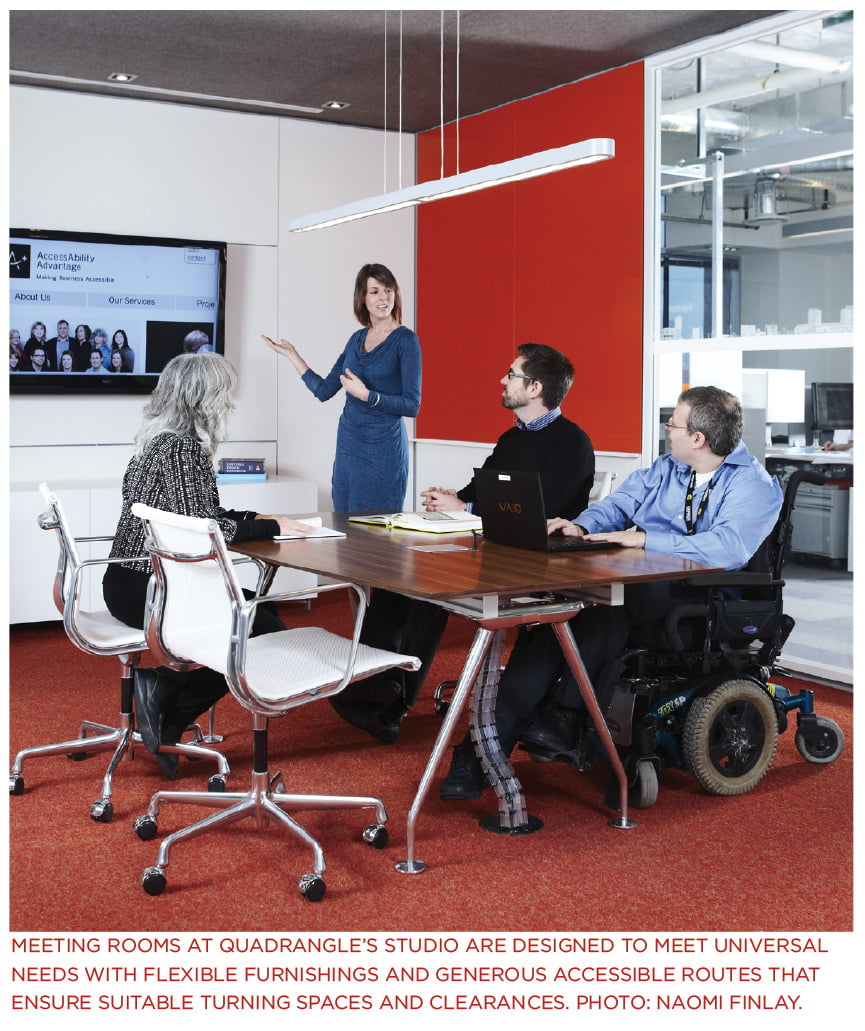
 Universal Design as Social Sustainability
Universal Design as Social Sustainability
Universal design is for everyone. Informed by the preferences of as many people as possible, rather than retroactively adapting spaces for those who face barriers to access, universal design is an optimized, conceptual approach to development. But for universal design to flourish and spread, it needs to be recognized not just as optional, but rather as essential and even desirable. Shedding light on the catalysts for success, and exploring examples of how accessible design complements environmental sustainability and social sustainability, we can demonstrate to governing bodies, the general public and architects and designers the benefits meeting the accessibility needs of everyone.
BY SUSAN RUPTASH
Parallels can be drawn between the mainstream success of the environmental sustainability movement—once considered an outlier campaign that was a hindrance to development—and the increasing awareness in universal design and its principles. Environmental sustainability was once considered too costly, or too time consuming to be implemented into everyday design practices. Yet once championed by figureheads such as Al Gore with his documentary ‘An Inconvenient Truth’ and his subsequent speaking tour, the core principles of sustainability became obvious elements to embed into everyday design standards. Such a singular catalyst to increase the presence of accessibility and frame universal design as a movement has not yet occurred. However, there is an urgent need for a global focus on universal design on the horizon, as a result of baby boomers and the aging population.
A significant portion of the population is going to need to begin to navigate their homes, places of work and entertainment, and essentially entire cities in a brand new way. Most buildings have not been outfitted in accessible ways complementary to this shift. Also, reliance on accessible public transportation will continue to increase. While some of these concerns are being addressed at present, the full weight of change has yet to be felt by municipalities, and if accommodations are delayed until the strain is more acute, most solutions will have to be stop gap measures rather than ones that are thoughtfully planned for the long term.
The aging population will also greatly affect the rental market in urban areas. As boomers consider downsizing their homes and transitioning to rental units, the real-estate landscape will need to evolve to meet such a demand with accessible options. If the cost of living in Canadian cities continues to rise, whole generations will migrate to the fringes in order to find affordable accommodation, as is happening with the millennial workforce, and there will be no one at hand to care for the aging population.
Establishing national accessibility legislation would rapidly improve the situation. Honourable Carla Qualtrough, Minister of Sport and Persons with Disabilities, recently concluded a comprehensive consultation process that will inform such a baseline. At the provincial level, a tangible shift is already in sight. Ontario recently introduced accessibility legislation aimed at making the province entirely accessible by 2025. This legislation is wide-reaching in scope, encompassing changes to traditional built environments, while also setting clear standards for customer service for persons with disabilities, employment considerations, transportation, and information and communications. Such broad legislation has raised awareness and interest in universal design, and offered new opportunities for education and cultivation.
Another strategy to help shape universal design into a viable movement is grassroots organization. Such campaigns leverage passion, and push for measures to take place before the legislation, hopefully, catches up. Leaders in the grassroots universal design movement are oftentimes frustrated with waiting for a solution and decide to combine their inherent expertise through lived experience with advocacy and dedication to their cause.
Organizations like the Rick Hansen Foundation work tirelessly to champion for accessible design. Awareness programs through schools, ambassadors, awards to acknowledge accessible design in Canadian cities and municipalities, grants, training, and giving back to the community through funding research campaigns all contribute to elevating the visibility of universal design in practice.
Individuals, too, can make all the difference in identifying what’s missing from the conversation on universal design and lend to building the groundwork of awareness. Luke Anderson and Maayan Ziv are two successful examples of champions within the field of accessibility advocacy.





